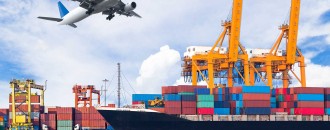
Currency ambiguity weighs on India-Iran trade
The Dollar Business Bureau
Donald Trump has made it amply clear that the landmark Iran nuclear deal negotiated by former President Barrack Obama is a 'bad deal'. Recent test-firing of ballistic missiles by Iran lead to a bitter feud between the two countries, ending in sanctions being imposed on companies and individuals related to missile programs in Iran.
Lack of clarity in Trump's future strategy for Iran has left traders in the middle-eastern country, along with their close trading partners in a limbo. India, one of Iran's closest trading partners, ranks second among its export destinations (after China) and fourth among its major importers (after China, South Korea and Turkey). In fact, oil embargoes on Iran proved to be a blessing in disguise for Iran-India trade, as total trade between the two nations increased by 80% in 2007. USA’s campaign against Iran’s alleged nuclear ambitions had cut off the country’s trade ties to most of the world on its right, boosting its trade with East Asia, especially India.
India, undaunted by stringent American sanctions on Iran had managed to maintain friendly trade relations with Iran through a barter-like system wherein, India paid for oil imports from Iran in rupees, which were held in a non-convertible account in UCO Bank. This balance was used by Iranian importers to pay Indian exporters. Such a system had worked well for both nations until recent developments played havoc with this long-running arrangement.
The lifting of majority of economic sanctions on Iran (piling up since 1979) in January 2016, lead to a shift of mode of payment for India-Iran trade. Post Iran’s newly-found financial freedom, India agreed to pay for oil imports in Euro, which is much more preferable to Indian rupee due to its easy convertibility. But this has led to a sharp fall in balance of the rupee account held by UCO Bank. Reportedly, the balance has depreciated by 90%, leaving only $305 million (20 billion rupees) worth of Indian currency with Iran. This has serious repercussions for Indian exporters who have been paid from this balance for years.
The year of the lifting of economic sanctions has also conveniently coincided with a 33% drop in India’s exports to Iran from $4 billion in 2014-15 to $2.7 billion in 2015-16. This can be attributed to dual problems of currency ambiguity and Iran’s renewed access to other parts of the world. Peak exports were achieved in 2013-14 at $4.9 billion, registering a 48% growth from the previous year.
While RBI has given a go-ahead for payment of imports in Euro, the same route for exports hasn’t been officially approved yet. India is still waiting for some policy signal from US, to choose between the old rupee-based payment mechanism or the Euro payments currently being used. While Iran is still stable, India is working towards cementing a mechanism to facilitate trade in Euro, via a common correspondent bank in Europe.
But this period of ambiguity is detrimental to Indian exports, the shipments of whom are stuck at ports in Iran for the lack of means of payment. The pervasive negative sentiment regarding Iran’s future in the presence of Trump has made most banks (with dollar exposure) shy away from brokering any such trade route between India and Iran. Another option India is looking at is reverting to the UCO rupee account, as Iran has given an in-principle nod to accepting rupee payments on oil exports to fund its imports from India.
Most of this incongruity has also slowed down India’s construction of the Chabahar Port in Iran, which would help flourish trade between the two countries.





 to success.
to success.